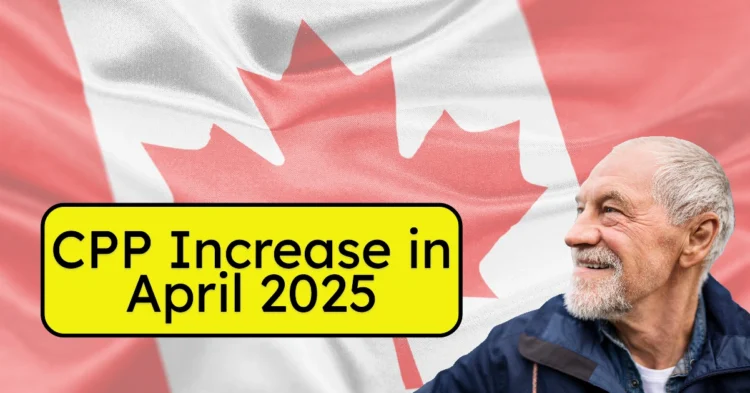The Canada Pension Plan (CPP) underwent significant enhancements in 2025, impacting both contributions and future retirement benefits for Canadian workers. These changes are part of a multi-year plan initiated in 2019 to strengthen retirement income security. This article delves into the specifics of the CPP increase in 2025, focusing on contribution rates, maximum pensionable earnings, and the implications for employees and self-employed individuals.
Table of Contents
Overview of the CPP Increase in 2025
In 2025, the CPP enhancements introduced a two-tier contribution system aimed at increasing retirement benefits for contributors. The key components of this system are:
- First Earnings Ceiling (Year’s Maximum Pensionable Earnings – YMPE): This is the income threshold up to which standard CPP contributions are made.
- Second Earnings Ceiling (Year’s Additional Maximum Pensionable Earnings – YAMPE): Introduced to allow higher-income earners to contribute more, thereby receiving increased benefits upon retirement.
Massive Boost for Canadian Seniors: $1,560 + $330 Extra OAS Payments Confirmed for 2025
$250 GST Relief Payment April 2025: Everything You Need to Know
Major CRA Benefits Arriving in April 2025: Full List of Payments & Eligibility Details
Top 5 Canada Benefit Cheques Arriving in April 2025: Dates and Details
CPP Payment Dates 2025: Complete Schedule & Essential Info for Canadian Retirees and Workers
Contribution Rates and Earnings Ceilings for 2025
The specific figures for 2025 are as follows:
- YMPE (First Earnings Ceiling): $71,300
- YAMPE (Second Earnings Ceiling): $81,200
These thresholds determine the portions of income subject to CPP contributions.
Contribution Rates:
- For Earnings up to YMPE ($71,300):
- Employees: Contribute 5.95% of earnings.
- Employers: Match the employee’s contribution at 5.95%.
- Self-Employed Individuals: Contribute both portions, totaling 11.90% of earnings.
- For Earnings between YMPE and YAMPE ($71,300 to $81,200):
- Employees: Contribute an additional 4% on earnings within this bracket.
- Employers: Match this additional contribution at 4%.
- Self-Employed Individuals: Contribute both portions, totaling an additional 8% on earnings within this range.
These rates are designed to ensure that higher-income earners contribute more, aligning with the goal of enhancing future CPP benefits.
Maximum Contribution Amounts for 2025
Based on the above rates and earnings ceilings, the maximum contribution amounts for 2025 are:
- For Earnings up to YMPE:
- Employees: Maximum contribution of $4,034.10.
- Employers: Matching maximum contribution of $4,034.10.
- Self-Employed Individuals: Maximum contribution of $8,068.20.
- For Earnings between YMPE and YAMPE:
- Employees: Maximum additional contribution of $396.00.
- Employers: Matching maximum additional contribution of $396.00.
- Self-Employed Individuals: Maximum additional contribution of $792.00.
These contributions are integral to funding the enhanced benefits that contributors will receive upon retirement.
Impact on Future CPP Benefits
The enhancements introduced in 2025 are projected to significantly increase future CPP retirement benefits. Once fully phased in, the CPP aims to replace approximately one-third (33.33%) of a contributor’s average annual earnings, up from the previous 25%. This represents a potential increase of up to 50% in retirement income for individuals who contribute to the enhanced CPP throughout their working years.
For example, a contributor who consistently earns at or above the YMPE and contributes accordingly could see their maximum monthly retirement pension increase substantially over time.
Implications for Contributors
- Employees: Should be aware of the increased deductions from their paychecks due to higher contribution rates, which will, in turn, lead to higher retirement benefits.
- Employers: Need to budget for matching the increased contributions for their employees and ensure payroll systems are updated to reflect these changes.
- Self-Employed Individuals: Must plan for higher total contributions, as they are responsible for both the employee and employer portions.
Understanding these changes is crucial for financial planning and ensuring adequate retirement income.
Conclusion
The CPP increase in 2025 marks a significant step toward enhancing retirement security for Canadians. By understanding the new contribution rates, earnings ceilings, and the impact on future benefits, contributors can better prepare for their financial futures. Staying informed about these changes ensures that individuals can make informed decisions regarding their retirement planning.

